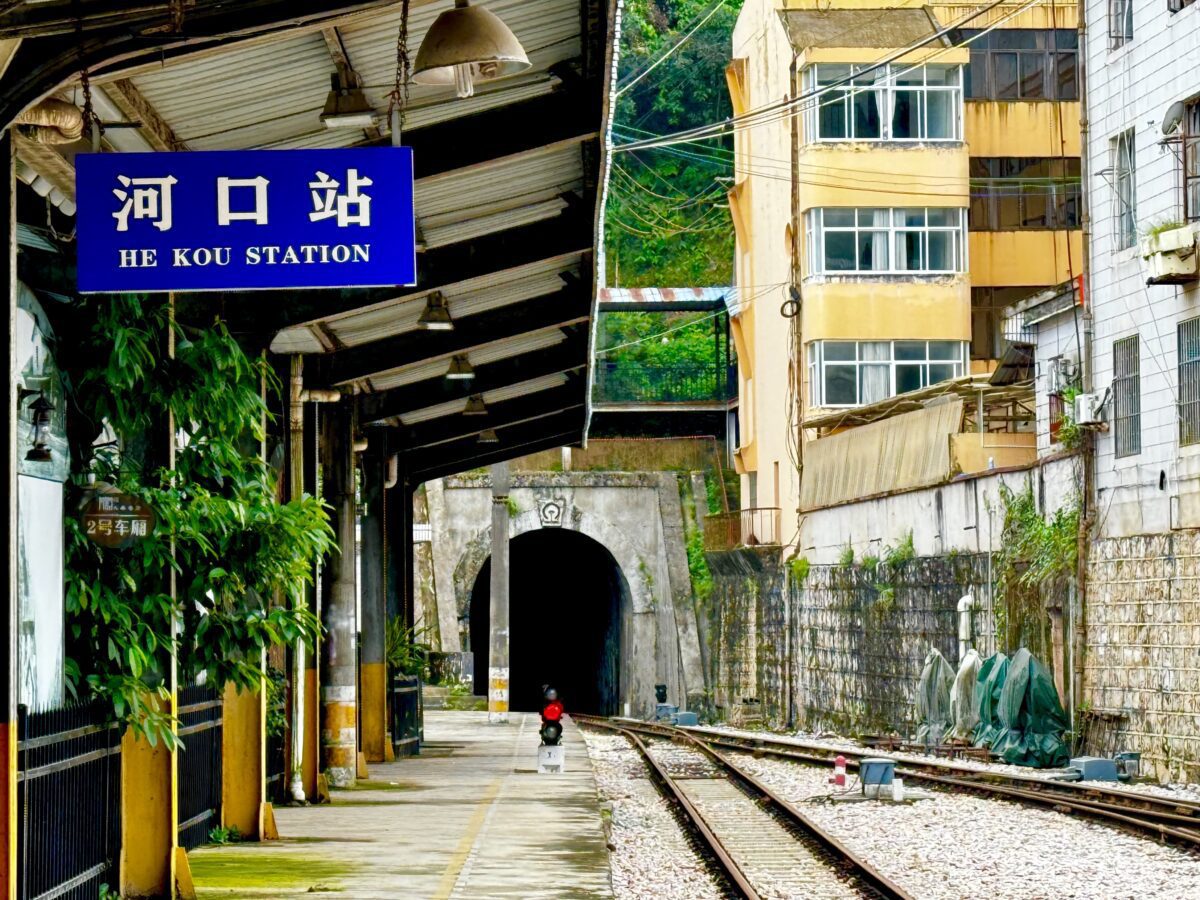
Nestled between China and Vietnam, Yunnan’s border city Hekou, once played a pivotal role along the Yunnan-Vietnam Railway
Welcome to Hekou (河口), where year long sweltering weather and authentic Vietnamese food are the norm. As Yunnan’s key southern border city between China and Vietnam, Hekou was once a thriving trade point between the two countries, with traders frequently crossing by foot or by transferring cargo along its historical train routes. Yunnan’s border city Hekou, was also once the border station of the Yunnan-Vietnam Railway, allowing cargo and trains to transfer goods between the two countries.
Today, Hekou, located in Yao Autonomous County resembles more of a ghost town. The economic downturn during Covid-19 period forced many residents to locate to other nearby cities within Honghe Prefecture. Yet, it’s colonial history, Vietnamese influence, and array of delicious food haven’t changed.
Exploring Yunnan’s Border City Hekou
Having ridden the 141 kilometer traditional train from Mengzi to Hekou’s North Railway Station, I was immediately greeted by an intense wave of tropical heat. Locals wear slip-on sandals and flower-themed linen button-ups to beat the heat. Countless electric fans, both mobile and stationary can be heard whirring around every corner as residents attempt to keep cool within the extreme humidity and heat. It’s over 30° C today.
Dazed by the sudden change in weather, I take a sip from an iced water bottle that is quickly beginning to match the outside temperature. I pop open my phone to check the distance to once of my first destinations in Yunnan’s border city Hekou: the China-Vietnam Bridge.
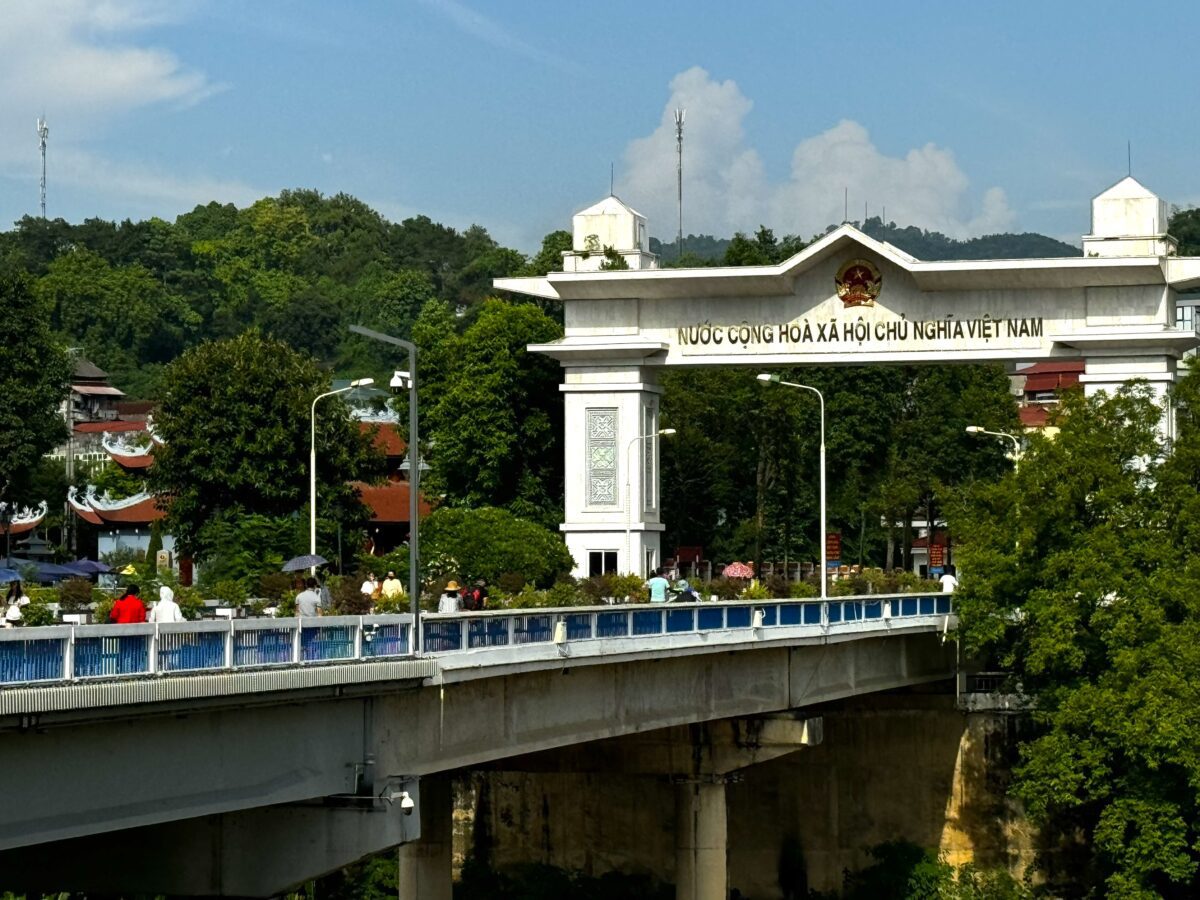
Hekou’s China-Vietnam Bridge: Coexisting Cultures
A quick ten minute taxi ride and I am next to the rather peaceful 15 meter wide China-Vietnam Bridge. It is one of the main border points where people start lining up to cross at eight a.m. every morning. A new six-floor government building displays the large red Chinese characters “中国河口” underneath the gold trimming decked along the edges of its roof. Tall wire-fence and baton-wielding security guards heavily monitor the bridge entrance allowing for people to enter and have their paperwork verified. I stroll over to the closest unfenced area next to the bridge to grab a closer look at the rather peaceful, border environment.
Opposite the city of Hekou is the Vietnamese city of Lao Cai. In the distance older European colonial-style buildings tucked between newer high-rises displaying Vietnamese billboards, showcases the mixture of culture and history rooted here. The calm Nanxi River, acts as a natural border dividing the two countries. Livestreamers, mostly from other Chinese provinces and trinket traders trying to sell fake Vietnamese currency and cigarettes tag behind me thinking I’m an easy sell. On the ground is a grey, speckled texture map of China and Yunnan, with a scratched up bronze plate showcasing Hekou’s location.
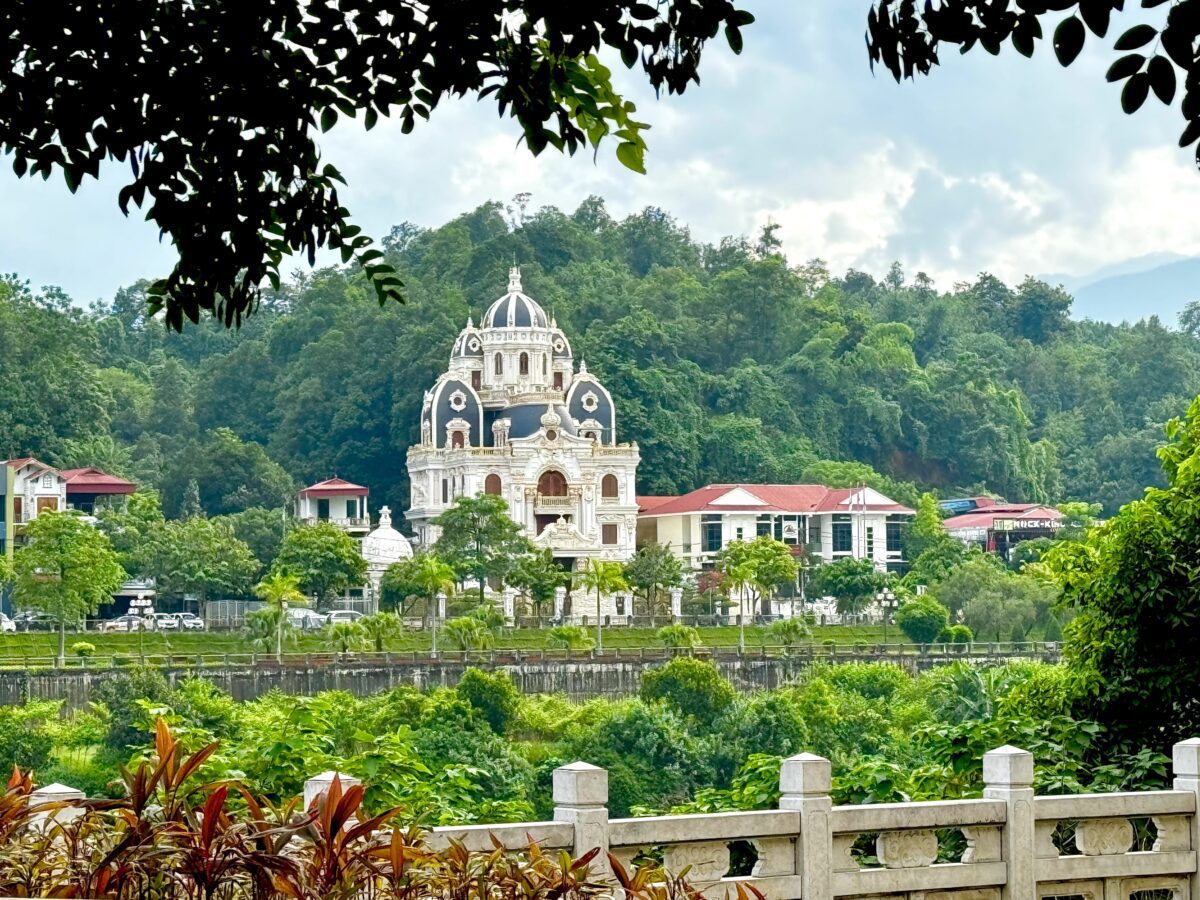
Looking at the blue street signs, I see one with the words “Hekou Custom Site” written across it. Along my list of destinations to visit, I head in that direction but take a quick bite to try some local xiao junfen, (小卷粉), or rice noodle rolls. They are indeed just as delicious as people say they are.
Vietnamese business signs, often selling a variety of spring rolls, noodle dishes, and Vietnamese drip-coffee dot the streets of Hekou. Adding in the plethora of Chinese business signs, Hekou definitely feels like a small international trading hub, with three-wheelers zooming in and out transferring goods. Boxes of Vietnamese-manufactured shoes and apparel bring ripped out of cardboard boxes litter the streets as small local businesses stock up on inventory.
Hekou’s Historical Landmarks: Former Customs Site (河口海关旧址)
Eventually, a mustard-yellow painted building, a common color painted on structures built alongside the Yunnan-Vietnam Railway appears around the corner. A boxy-building with the year 1987 and a saint-looking symbol hung atop appears between two French-style windows. A small cannon, repositioned from some of the former forts atop Hekou’s mountains, sits atop a stone platform, introducing visitors to the entrance of Hekou’s Old Customs House.
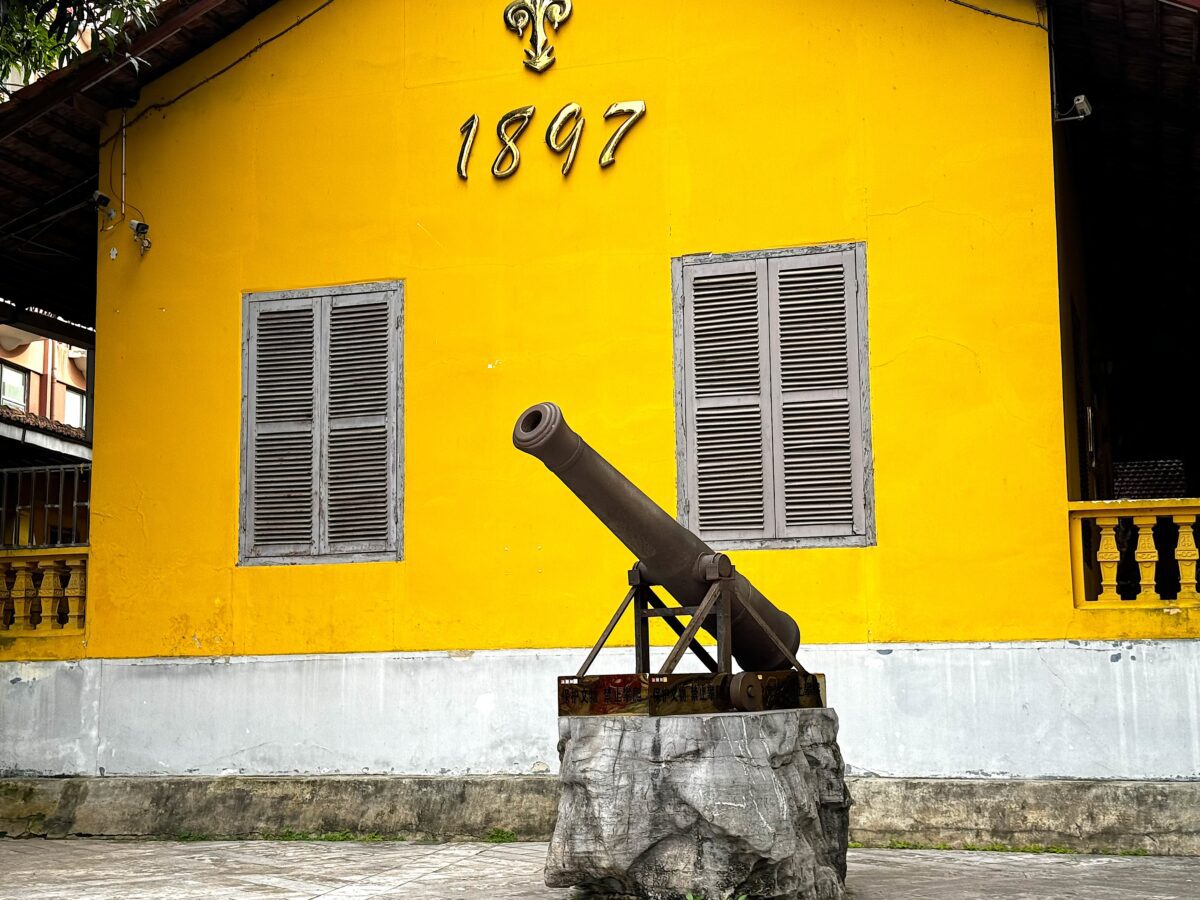
Built in 1897, Hekou’s Former Custom Site was renovated into the Hekou Uprising Memorial Hall in 2001. Though the site became a provincial-level protected cultural relic in 1998, it doesn’t seem to attract much tourism traffic. The peeling paint and the fading French-tiled staircase seem like its been largely neglected. I walked up the stairs to locked doors, and shutters sealed shut. Tourists and locals are all next-door at a small trendy restaurant, with a few darting across to the Vietnamese cafe opposite the restaurant.
Unable to dig deeper into the local history, I walk over to six bronze statues that lined up directly the Hekou Uprising Memorial Hall’s entrance. From the history of the Black Flag Army to the background of Hekou’s famous rice noodle rolls, the golden plaques are helpful in gaining a better understanding of this rather quiet border city.
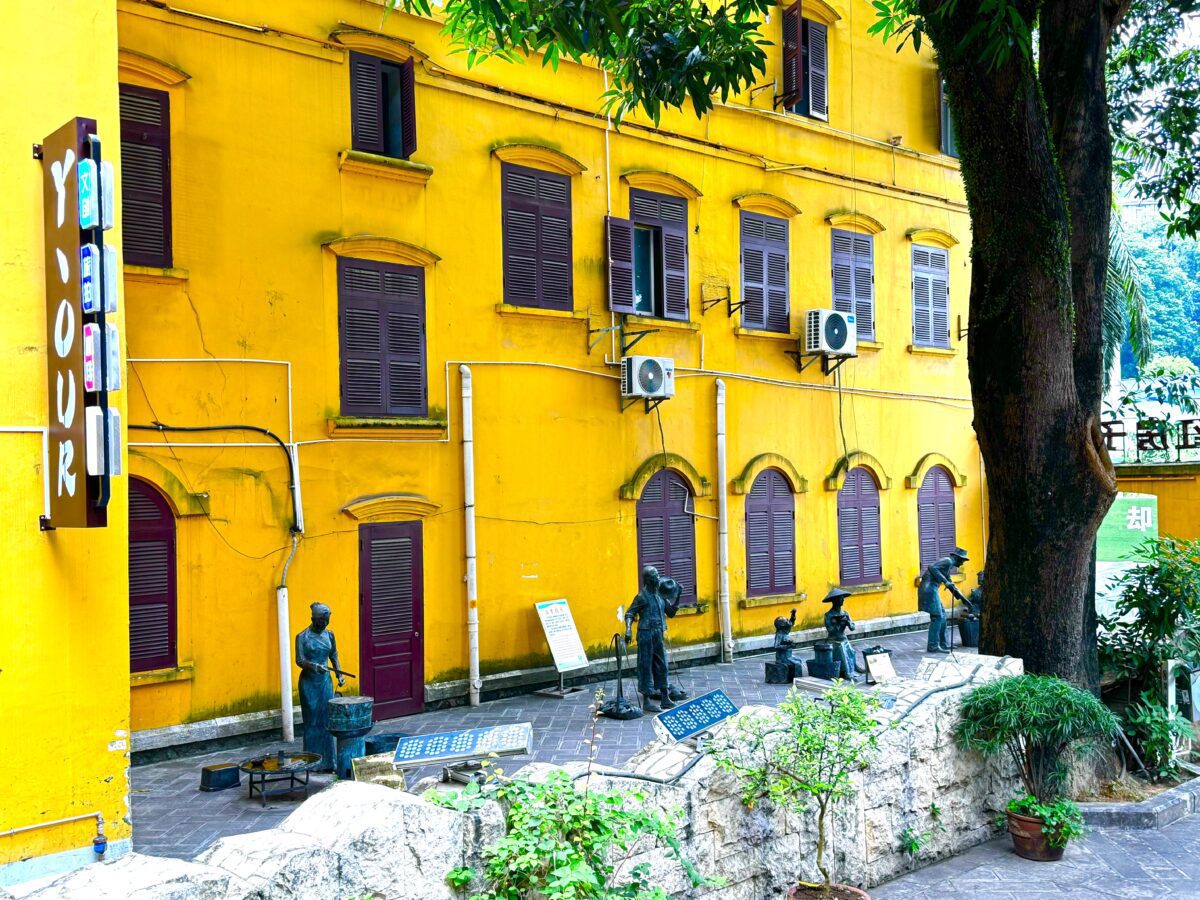
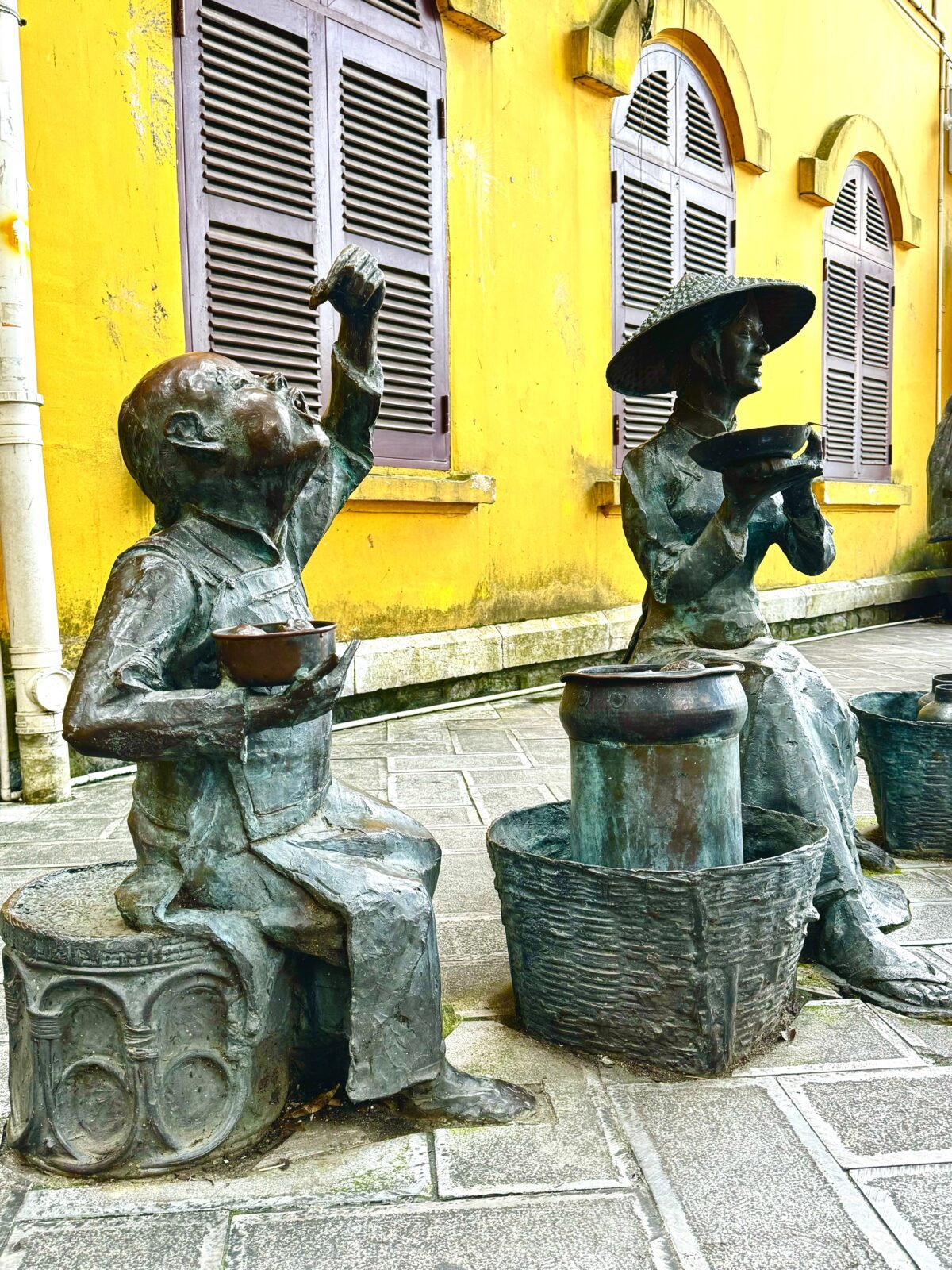
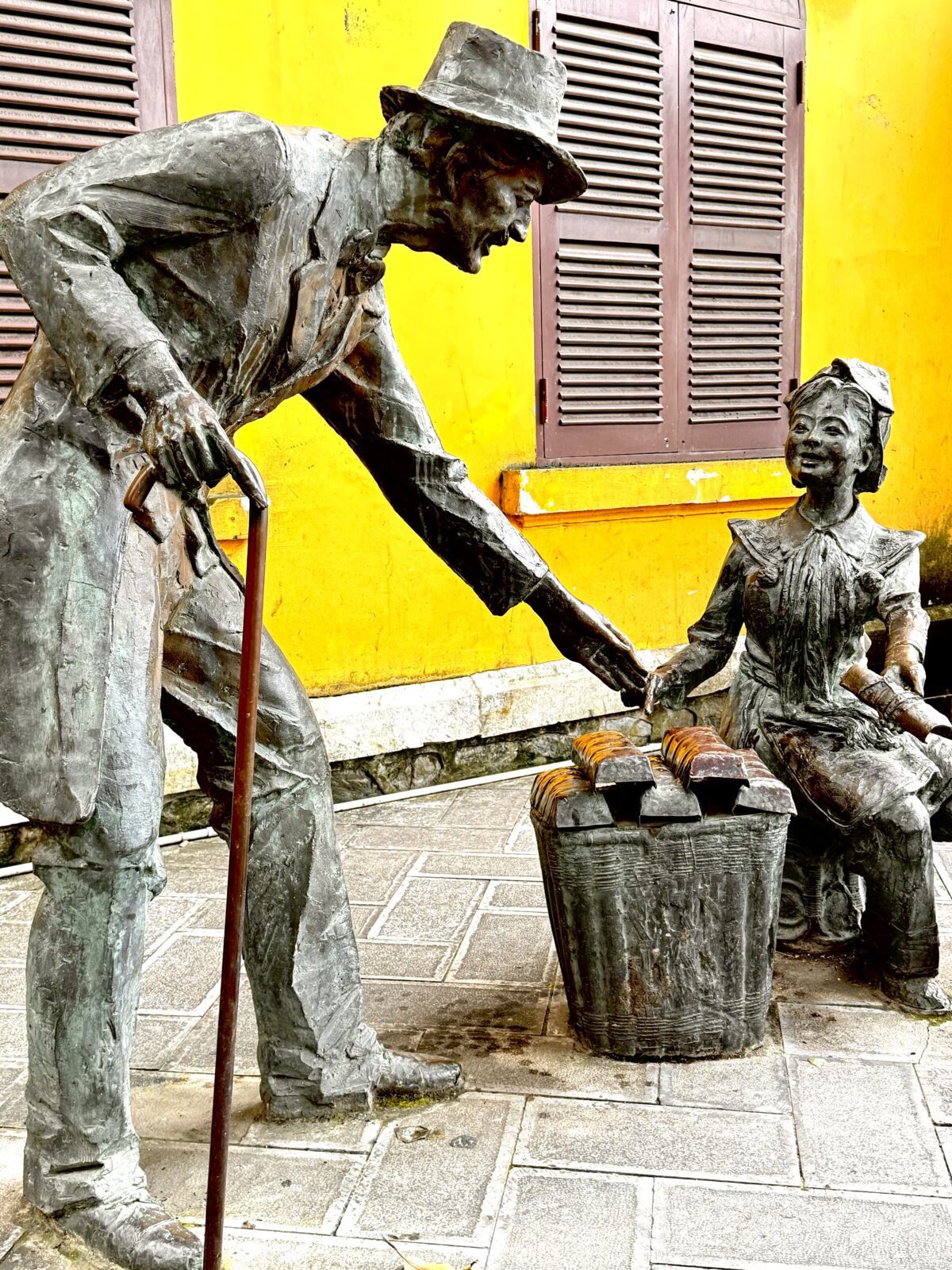
Remnants of the Yunnan-Vietnam Railway and Old Hekou Train Station
The Yunnan-Vietnam Railway’s narrow gauge railway track winds its way by a few French colonial buildings nearby, as it makes across the bridge to Lao Cai, and to its endpoint in Haiphong. Having finished reading the historical plaques, I follow the path up northeast, eventually coming across the tracks of the Yunnan-Vietnam for the first time in Hekou. With the tracks continuing on into a restricted harbor area and into Vietnam, I examine the other direction the tracks head off into. I take a quick break at the Old Pier to get a glimpse of the Nanxi River and the smaller bridge which the Yunnan-Vietnam Railway crosses into Vietnam. Taking a short break, I resume my route along Exotic Street (异域风情街), and to the old Hekou Train Station.
Up in the distance a persimmon-orange flat-roof appears with a 1903 and Hekou Station sign under a white clock. Strolling up a wedding event is taking place, with the front parking lot packed with black SUV’s and guests exchanging pleasantries at a restaurant entrance next door. I walk towards the main entrance of Hekou Train Station, only to find thew back patio area fenced off. Undeterred, I walk around the station to locate the actual Yunnan-Vietnam Railway tracks.
The Yunnan-Vietnam Railway encompasses a total of 859 km, with 394 km running form the Vietnamese port city of Haiphong to China’s Hekou. The remaining 465 km starts from Hekou all the way up north to Kunming, Yunnan’s capital. Hekou Train Station played an important role as the first train station in Yunnan along the Yunnan–Vietnam Railway and exit point to Vietnam.
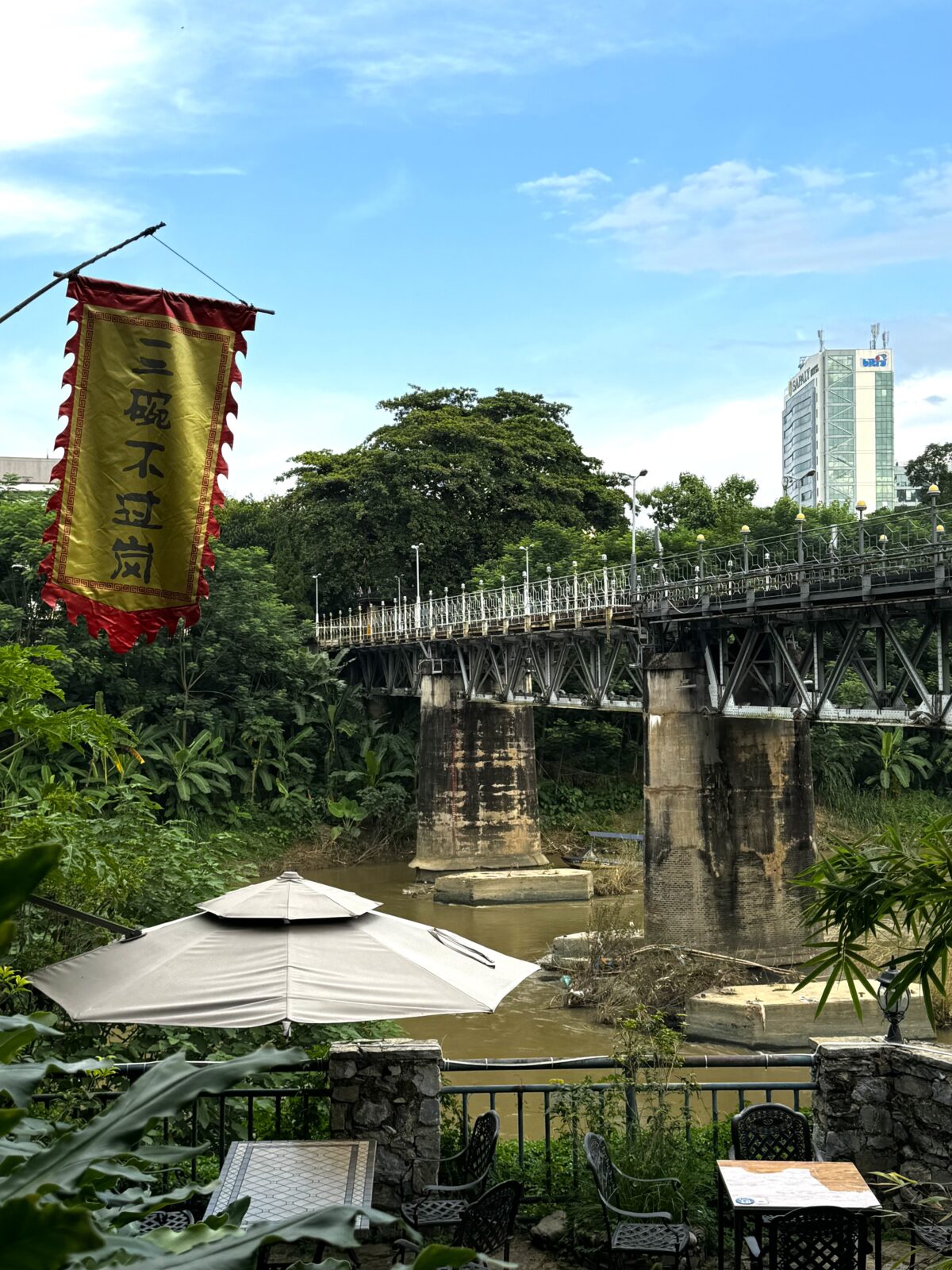
Hekou’s Historical Links with Yunnan-Vietnam Railway
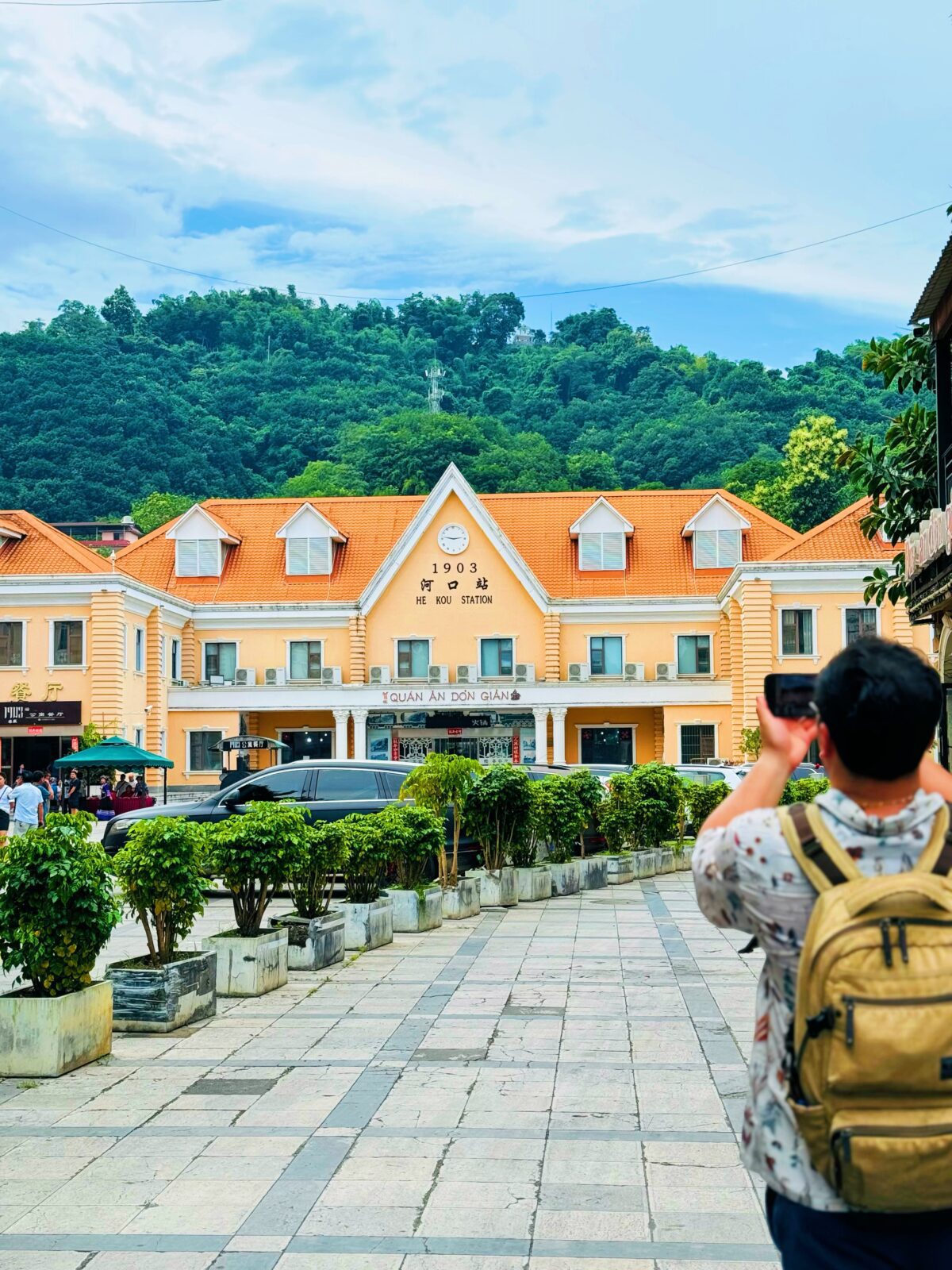
Construction of the Vietnam railway section began in 1901 and finished in 1904, with Yunnan breaking ground shortly after in 1904 and finishing six years later in 1910. Since finishing completion in 1908, Hekou Train Station underwent multiple rounds of renovation and expansion, including in 1957, 1993 and 2018. Most the original train station has since been torn down, with a newer French-style building now standing in its place.
Both Hekou Train Station and the Yunnan-Vietnam Railway section laid around Hekou have experienced the tumultuous history in the region. During the Vietnam War, Hekou Station acted as the bridgehead in supplying materials for the war effort.
In 1997, after relations between China and Vietnam warmed-up in the 90’s, an international train line running from Kunming North to Hanoi via Hekou, opened up.
However, by 2003 all meter-gauge passenger trains were stopped, including the Kunming to Hekou line. Today, freight trains continue to cross over from Vietnam and through to Hekou Train Station, including routes running from Haiphong to Kaiyuan Train Station, in Honghe Prefecture.
Hekou: Future of Yunnan’s Border City

Much of the back of the train station is still standing, with a few of the older buildings still displaying the iconic mustard-yellow paint. A few of the original cement storage-houses remain upright as well. A signal light, currently lit red, sits nestled in the gravel between the three sets of train tracks as they diminish into a dark tunnel in the mountain ahead.
Hekou Train Station is much smaller compared to other Yunnan-Vietnam Railway stations like Bisezhai. Yet, it still maintains a charm of its own. I survey both ends of the old train station. One direction darts into the dark tunnel towards Vietnam. The other direction, into the endless trees and jungles that engulf Honghe Prefecture towards Mengzi and Kunming.
Hekou Train Station is a rather simple train station and less-aesthetic compared to a few of the more elaborate stations along the Yunnan-Vietnam Railway. It seems like the lone historical plaque was placed to fulfill a minimum work requirement, with just one brief historical plaque placed behind the train station. Yet, the city of Hekou itself seems to be slowly making a resurgence. Tourists are few, though more western foreigners seem to be trickling back in. Many local shops still remain closed, but there is a noticeable resurgence of life along its streets since my last visit.
It’s just past six and I suddenly realize my train for Mengzi leaves at 6:43. Reflecting on my visit, it was clear that while Hekou may not be as bustling as it once was, it still holds a unique place in Yunnan’s history and cultural landscape.

